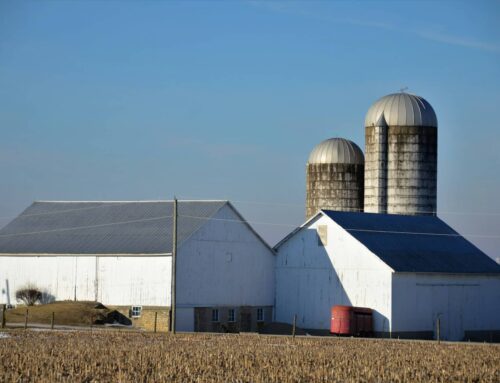On Tuesday, March 8, the House Agriculture Committee plans to hold a hearing entitled “A 2022 Review of the Farm Bill: Rural Development.” While the majority of farm bill spending is directed toward production agriculture and nutrition programs, the farm bill also includes various rural development and bioenergy programs. Some farm bill programs such as federal crop insurance have negative impacts on rural communities (with a new study finding that subsidies spur farm consolidation), but nonetheless, U.S. Department of Agriculture (USDA) programs fund everything from broadband internet to farmers market/local food projects. The next farm bill should ensure that programs do not work at cross purposes with one another but rather promote better cost-effectiveness, transparency, accountability, equity, and responsiveness to economic conditions and challenges such as climate change. True rural development needs to promote resilience not dependence on federal subsidies.
As part of the hearing, the Committee will likely discuss the energy title programs enacted in the 2018 farm bill. The most expensive farm bill energy title program – the Rural Energy for America Program (REAP) – was meant to spur the production of rural wind and solar projects, benefiting farmers and rural businesses. While most REAP spending over the past decade went to rural solar projects, the program also subsidized the mature biodiesel and ethanol industries despite Congressional prohibitions and the fact that first generation biofuels fail to significantly reduce greenhouse gas emissions. Since 2010, USDA spent $10 million subsidizing biodiesel facilities, $32 million on ethanol facilities and blender pump infrastructure, and $33 million on biomass sources. One biomass project spent taxpayer dollars on a feasibility study for wood pellet manufacturing for both domestic and international use, i.e. cutting down US trees to export to Europe to be burned in power facilities, which does not benefit the climate.
| Table 1: Rural Energy for America Program Projects, Nov. 2010 to Sept. 2021 | ||
| Types of Projects | Loan/Grant Amount | % of Amount |
| Solar | $889,238,533 | 74% |
| Energy efficiency and energy audits* | $82,540,025 | 7% |
| Anaerobic digesters and biogas | $78,230,126 | 6% |
| Biomass | $32,741,893 | 3% |
| Ethanol & blender pumps | $31,735,351 | 3% |
| Grain dryers* | $26,119,725 | 2% |
| Other, tobacco, or unknown | $23,959,329 | 2% |
| Wind (or wind & solar) | $13,840,379 | 1% |
| Soy and other types of biodiesel | $9,665,602 | 1% |
| Hydropower | $8,427,189 | 1% |
| Geothermal | $5,356,068 | 0.4% |
| Irrigation* | $4,566,025 | 0.4% |
| TOTAL | $1,206,420,246 | |
| * Note that some grain dryer and irrigation projects may be categorized under “energy efficiency” projects since USDA did not provide detailed information for some entries. Therefore, the number of grain dryers and irrigation systems that received grants or loans under REAP may be underestimated. | ||
Some Members of Congress proposed significant REAP spending increases in Build Back Better (the budget reconciliation package) and other legislative proposals. However, if USDA continues to circumvent Congressional intent and direct REAP funding to mature biofuels facilities, the program will fail to meet its intended goals. REAP also wastes taxpayer dollars on special interests such as tobacco and routine business costs such as replacing grain dryers and irrigation equipment.
Other farm bill energy title programs waste taxpayer dollars on projects that, despite their titles, fail to deliver climate benefits. Some examples include:
- The Biorefinery Assistance Program risks taxpayer dollars on loan guarantees for bioenergy projects.
- The Biomass Crop Assistance Program (BCAP) has been littered with waste, fraud, and abuse, leading to Congress significantly cutting its funding.
- The Bioenergy Program for Advanced Biofuels has a history of subsidizing large agribusinesses and biofuels companies such as Renewable Energy Group (Chevron recently announced it plans to acquire REG), Louis Dreyfus, Ag Processing, Archer Daniels Midland, MN Soybean Processors, and Cargill Inc.
- Yet other programs such as the Biomass Research and Development Initiative (BRDI) subsidize woody biomass and other dead-end projects that have squandered taxpayer dollars on the failed cellulosic biofuels industry for decades.
Instead of wasting taxpayer dollars on false climate solutions such as bioenergy, the Agriculture Committees should instead invest in initiatives that deliver real climate results, such as reformed conservation programs.










